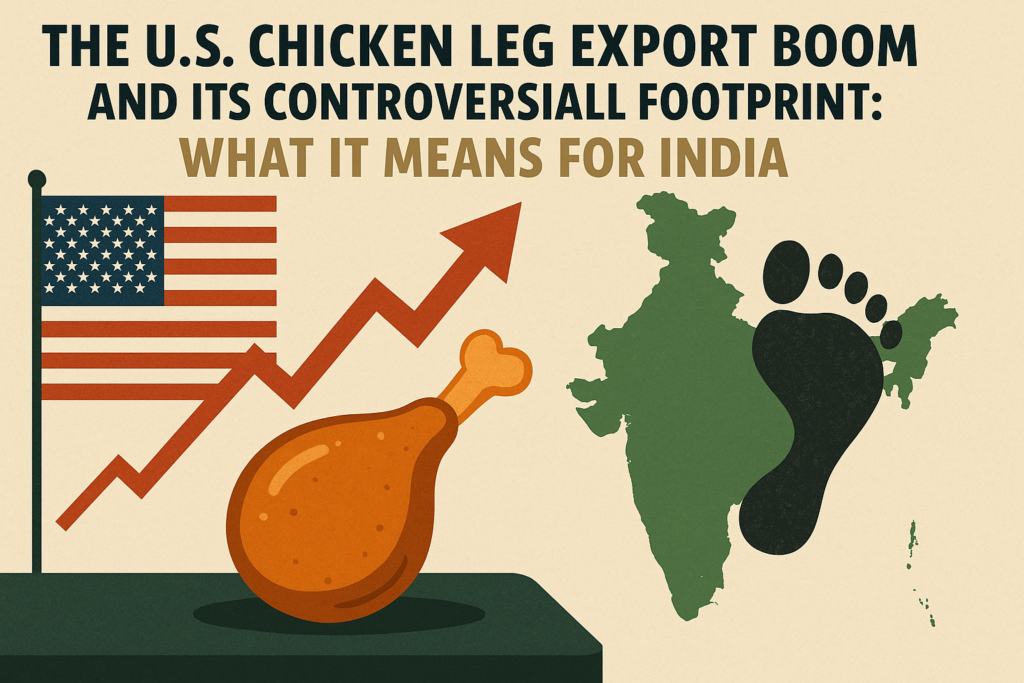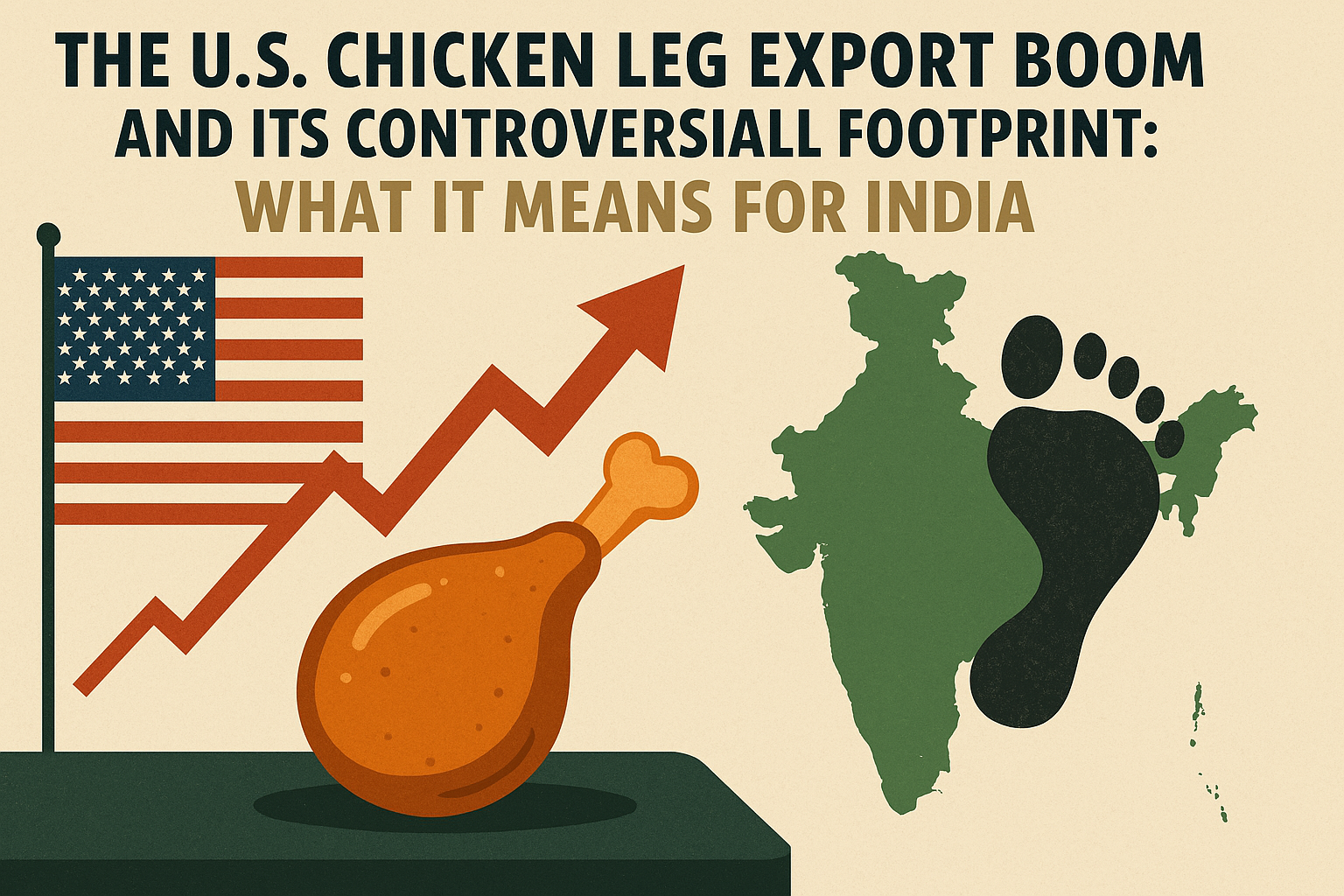The United States is the world’s largest poultry exporter, shipping 4.3 million metric tons of chicken annually to global markets, valued at $5.2 billion in 2022 (USDA Foreign Agricultural Service, 2023). Among its most sought-after exports are chicken legs—specifically leg quarters (thighs and drumsticks)—which are less popular in American diets but a cheap protein source for many developing nations. However, this trade has sparked intense debates over economic fairness, food sovereignty, and the ethics of globalized agriculture.

Dumping and Undermining Local Farmers: A Global Concern
Critics accuse the U.S. of “dumping” chicken legs—selling them below production costs—to dominate foreign markets. This practice has devastated local poultry industries in many developing economies:
- Ghana, once self-sufficient, now imports over 80% of its chicken, primarily from the U.S. and EU (ActionAid, 2020).
- In South Africa, imports from U.S. grew by 328% from 2000–2015, triggering protests and an 82% anti-dumping tariff in 2016 (South African Poultry Association, 2016).
- Similarly, in Nigeria local poultry farmers supply just 30% of domestic demand, with imports filling the gap (FAO, 2022).
This pattern of undermining local production for short-term cheap imports raises a red flag for countries like India, which boasts one of the world’s fastest-growing poultry industries.
Trade Policy: Subsidies for U.S., Free Market for Others
The U.S. protects its agriculture with $25 billion in annual subsidies (EWG, 2023) while pushing open markets abroad. This contradictory approach creates an uneven playing field:
- Under AGOA (African Growth and Opportunity Act), African nations must accept U.S. poultry imports for trade benefits (USITC, 2022).
- The USMCA (U.S.-Mexico-Canada Agreement) reserves 99% of Canada’s poultry market for U.S. exporters (USTR, 2020).
Such aggressive trade practices prioritize U.S. agribusiness interests while destabilizing agricultural ecosystems in developing economies.
What If India Opens Its Market to U.S. Chicken Legs?
India is currently shielded from U.S. chicken imports due to a 100% import duty, justified by the need to protect its domestic industry and food safety standards (Business Standard, 2023). However, if India starts allowing large-scale imports of U.S. chicken legs, the consequences could be far-reaching:
1. Economic Impact on Indian Poultry Industry
- India produces over 4.5 million metric tons of broiler meat annually (2022 estimates).
- The industry provides direct and indirect employment to over 3 million people, including smallholder farmers.
- Imported U.S. chicken legs could cost 30%-50% less than locally produced meat due to subsidies and surplus stock disposal strategies.
This could collapse farm-gate prices in India, pushing small and medium poultry farmers to bankruptcy, especially in states like Andhra Pradesh, Tamil Nadu, and Punjab.
2. Trade Policy and Sovereignty Concerns
India could be pressured in future trade negotiations (like FTA talks with the U.S.) to lower import barriers on agricultural goods, including poultry. This threatens India’s food sovereignty, reducing control over its agricultural economy.
Should India Import U.S. Chicken Legs?
While global trade liberalization often promises cheaper food for consumers, the case of U.S. chicken leg exports is a cautionary tale of how such policies devastate local industries and compromise food sovereignty. For India, importing U.S. chicken legs may offer short-term gains in price reduction but would likely lead to:
- Market disruption for millions of Indian farmers.
- Increased unemployment in rural areas.
- Health concerns due to differing food safety standards.
- Loss of bargaining power in global trade negotiations.
India’s current protective policy of maintaining a 100% duty on imported chicken legs is not merely economic protectionism — it is a necessary defence against a model of trade that has already harmed nations across Africa and Asia.
Food security is not just about feeding people — it’s about how we feed them. India must learn from global examples and tread carefully before opening its market to U.S. chicken legs. Protecting domestic agriculture is essential not only for economic reasons but for preserving the social fabric and health of its population.



